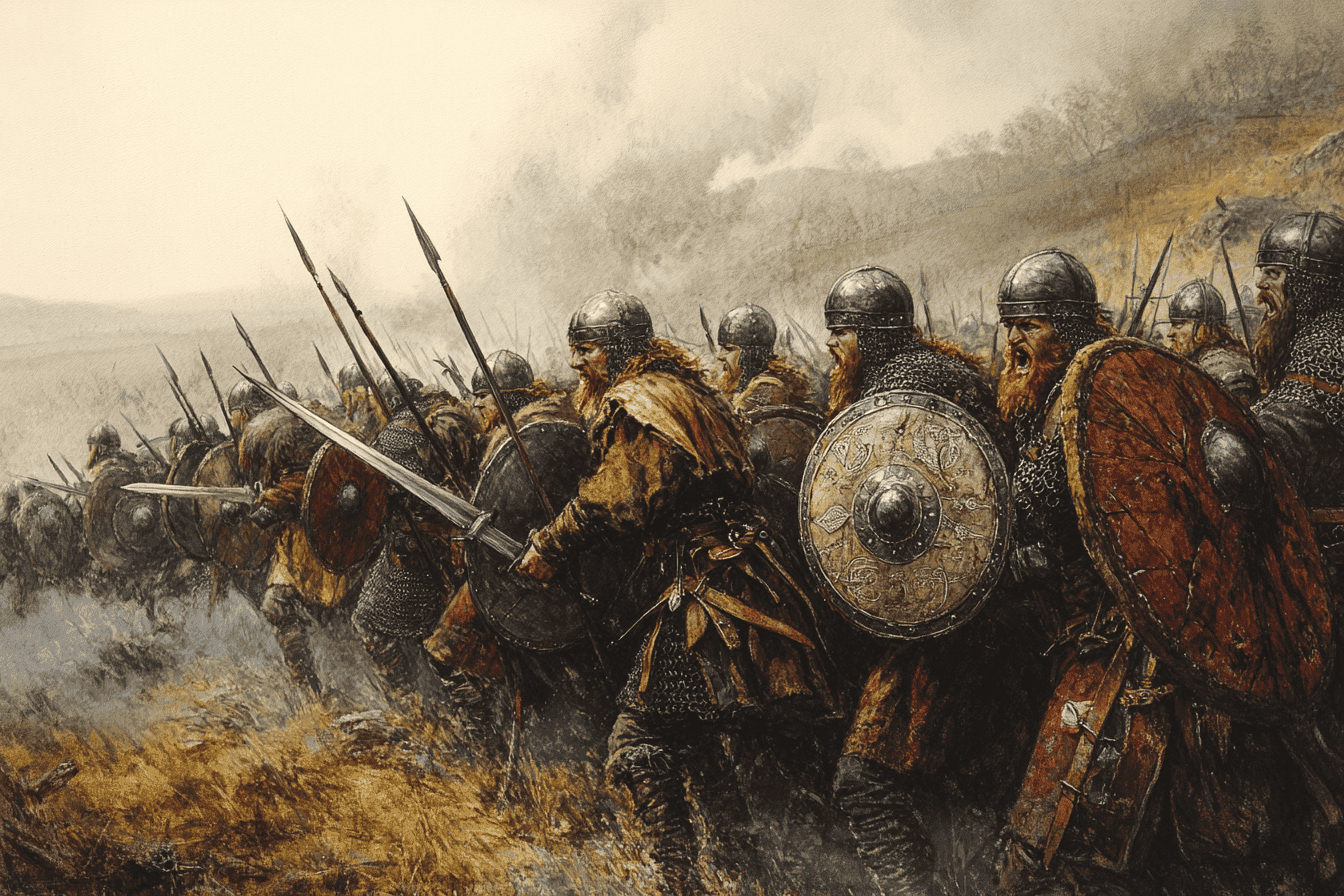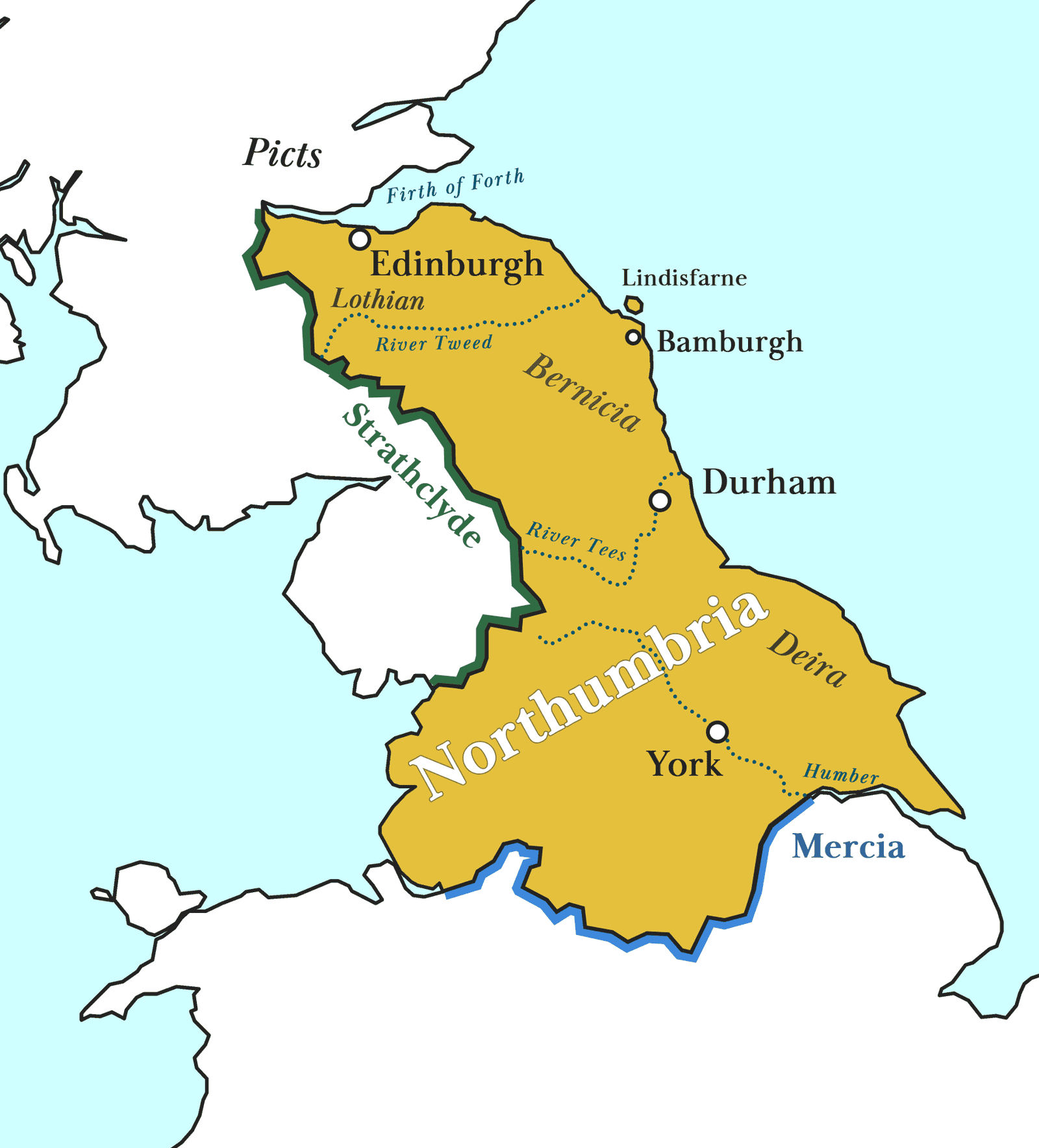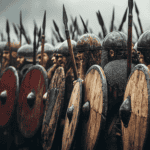
The Foundations of Deira and Bernicia
Deira, the southernmost of the two kingdoms, encompassed much of modern-day Yorkshire, stretching from the Humber River in the south to the Tees River in the north. Its origins can be traced back to the latter half of the 5th century, as Anglo-Saxon settlers gradually established their presence in the region.
Bernicia, on the other hand, emerged slightly later. Its foundations were laid in 547 CE when Anglian settlers established a stronghold at Bamburgh, a coastal fortress that would become the seat of power for the Bernician kings. The kingdom initially extended from the Tees River to the Tweed, later expanding northward to the Firth of Forth in Scotland.

Early Conflicts and the Rise of Æthelfrith
The early history of these kingdoms is shrouded in mystery, with few reliable records surviving from this period. However, by the late 6th century, the first signs of conflict between Deira and Bernicia began to emerge. The catalyst for this rivalry came in the form of Æthelfrith, who ascended to the throne of Bernicia in 593 CE. Æthelfrith was a formidable leader who sought to expand his kingdom’s influence. In 604 CE, he seized an opportunity to extend his power southward into Deira. The young Deiran heir, Edwin, was forced into exile as Æthelfrith united the two kingdoms under his rule, creating the first incarnation of what would become Northumbria.
The Reign of Edwin and the Christian Conversion

Edwin, the dispossessed heir of Deira, spent years in exile, gathering support to reclaim his throne. His opportunity came in 616 CE when he defeated and killed Æthelfrith at the Battle of the River Idle. With this victory, Edwin not only reclaimed Deira but also took control of Bernicia, effectively reversing Æthelfrith’s earlier unification.
Edwin’s reign marked a significant turning point in the region’s history. In 625 CE, he married Æthelburga, sister of the Christian King of Kent. This union led to Edwin’s conversion to Christianity in 627 CE, making him the first Christian king of Northumbria. Under his rule, the kingdom reached the height of its political power, with Edwin’s overlordship recognized throughout much of England.
The Pagan Resurgence and Oswald’s Christian Revival
Edwin’s reign, however, was cut short in 633 CE when he was killed in battle by Penda, the pagan king of Mercia. This event plunged Northumbria into chaos, temporarily dividing the kingdom once again. The unity of Northumbria was restored in 634 CE with the ascension of Oswald, son of Æthelfrith.
Oswald, who had been in exile among the Irish, brought with him a strong commitment to Celtic Christianity. He invited the monk Aidan from Iona to establish a monastery on Lindisfarne, which became a center of Christian learning and culture. Oswald’s reign saw Northumbria regain its position as the most powerful kingdom in Britain. However, like his predecessor, Oswald met his end in battle against Penda of Mercia in 642 CE.
The Final Unification Under Oswiu

Following Oswald’s death, his brother Oswiu took control of Bernicia, while Deira briefly regained independence under Oswine, son of the former king Osric. This period of division was short-lived and marked by increasing tensions between the two kingdoms.
In 651 CE, the conflict came to a head when Oswiu declared war on Oswine. The reasons for this conflict remain unclear, though some speculate that differences in Christian practices may have played a role. Oswiu followed the Celtic Christian tradition, while Oswine is believed to have adhered to Roman Catholicism. Faced with Oswiu’s superior forces, Oswine chose to disband his army rather than fight. He sought refuge with one of his earls but was betrayed and executed on Oswiu’s orders. This act marked the end of Deiran independence and the final unification of Northumbria under Bernician rule.
The Legacy of Unification
The unification of Northumbria under Oswiu in 654 CE ushered in a new era of stability and cultural flourishing. Oswiu’s reign saw the kingdom regain its position as the most powerful in Britain, even briefly extending control over Mercia. One of the most significant events of Oswiu’s reign was the Synod of Whitby in 664 CE. This council was called to resolve the differences between Celtic and Roman Catholic Christianity, with Oswiu ultimately ruling in favor of Roman practices.
This decision had far-reaching consequences, aligning Northumbria more closely with continental Europe and promoting the growth of monastic learning and scholarship. The unified Northumbria became a center of cultural and intellectual achievement. The kingdom saw the rise of great churchmen and scholars such as Benedict Biscop, Wilfrid of Ripon, and the Venerable Bede. These figures contributed to what has been called the “Heroic Age” of the Anglo-Saxon Church in the 8th century.
Conclusion: The Birth of a Kingdom
The story of Northumbria’s formation is a testament to the complex and often violent process of state-building in Dark Ages Britain. From the rival kingdoms of Deira and Bernicia emerged a unified power that would dominate northern England for centuries. The final unification under Oswiu in 651 CE marked the end of an era of conflict and the beginning of Northumbria’s golden age.
While the kingdom would face future challenges from Viking invasions and internal strife, the legacy of this unification would endure. The cultural and intellectual achievements of Northumbria, born from the merger of Deiran and Bernician traditions, would leave an indelible mark on English history.




